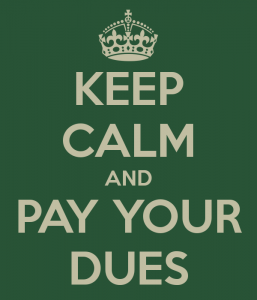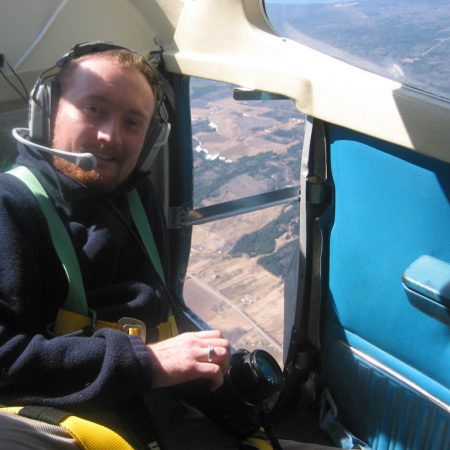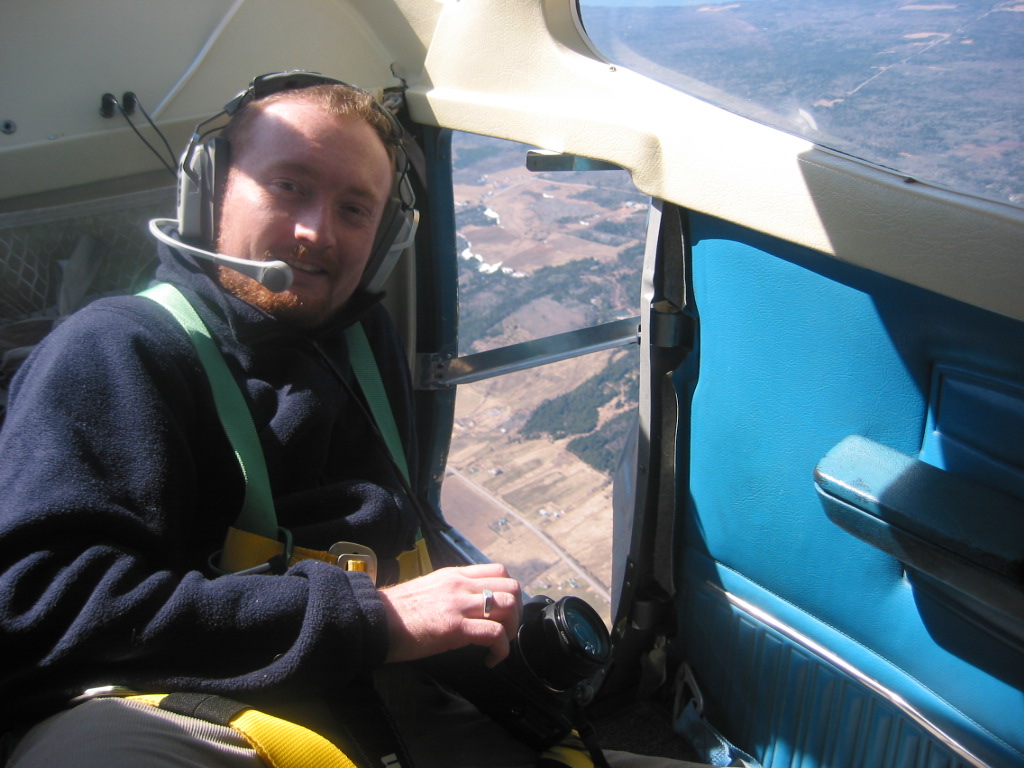CGCRT Says GeoAlliance – Take it or Leave it
As one of the former team members, and until last fall a volunteer of the Canadian Geomatics Community Round Table (CGCRT), I am going to interpret and analyze the most recent communications from the CGCRT, the new name Geoalliance, and the new governance model that has been distributed.
Miscommunications
Unless you had volunteered for one of the seven working groups formed after the June 2014 “Team Canada” event, you most likely have not received any news about the progress on the project until very recently. For the last 7 months, the CGCRT seemingly had gone to ground with the project. I have been just as frustrated as everyone else in the geomatics community at the lack of information and news from the CGCRT. We were assured they would be using the email subscriber list and website to keep us abreast of the project. Now, after seven months of virtual silence, the first emails we received from the CGCRT in 2015 seemed rather odd. They were full of self-congratulations, but very little information. If you didn’t have the chance to read these emails, you can take a look here: Email 1 / Email 2. The first one is particularly full of hyperbole without much purpose. I suspect these recent communications had a couple of goals: One, to try to allay fears that the project has been flagging; the other, to rekindle some interest from the geomatics community.
Why is this? Are they desperate to convince the reader that the CGCRT is still indeed moving forward and that the last seven months spent in silence were somehow part of a master plan that is going really, really well?
The most recent emails contain the CGCRT’s new governance model, finally giving us some idea of what the CGCRT has been doing for 7 months. They also reveal a new name for the umbrella group: GeoAlliance Canada.
What’s in a Name?
Let’s have a closer look at this new name. After discussing it with others in the community, I and others are very disappointed that the CGCRT has begun to spin and rebrand the geomatics community effort as a “Geo” community effort. I find myself asking, why?
Are we creating an umbrella association for every “Geo” group out there? After all, “Geo” doesn’t just refer to geomatics and geography, but also geobotanists, geochemists, geochronologists, geologists, geomancers, geomorphologists, geopoliticians, geoscientists, geostrategists…you get the point. Exactly how big is this tent that the CGCRT is creating, and to what purpose? In the governance document, they try to cover themselves by explaining that it is more inclusive to use the term “Geo” rather than geomatics. With this in mind, they have unilaterally named the new umbrella group the “GeoAlliance.”
The word geomatics has deep Canadian roots and even deeper ones in Quebec. How could the CGCRT not see the branding opportunity associated with that to showcase everything that is Canadian geomatics to the world? An entire piece of the strategy is to develop the geomatics brand for Canada. It’s our word – why would they not include it in the name of the umbrella organization whose whole purpose is to shepherd the Pan-Canada Geomatics Strategy? I don’t doubt their intentions were good, but as they say, the road to “you-know-where” is paved with good intentions.
“GeoAlliance” is an obvious branding and marketing misstep that can’t be fixed by using the tagline they have tacked on at the end of it. It reads: “GeoAlliance Canada – The Canadian geomatics, geography and geospatial leadership network.” They try to argue that this new name is easier to remember than an acronym, and that it is very original. What about using the name Geomatics Alliance of Canada? That’s just as original and much clearer. If they wanted to be unique, they’ve failed pretty badly; a quick Google search brings up many entities using the word “GeoAlliance” both in Canada and abroad.
What was wrong with using the word geomatics, anyway? The CGCRT used it quite effectively to bring the geomatics community together. Why jettison it now? I suspect politics played a huge part in the selection of the name. Sources within the project tell me that one or two individuals dug in their heels and demanded the new group should be branded with the term “geography.” This “geo” business is a compromise, as those involved got fed-up with arguing over what should have been a moot point.
My last thoughts on the name debate is the way that the CGCRT has dictated the name to the community. This take-it-or-leave-it approach is unsavory at best. What was supposed to be an open and collaborative process has become a top-down affair.
The community came together in June of last year for a Team Canada geomatics event. There, we worked collaboratively on the “Action and Implementation Plan” for the national geomatics strategy. We did it together as a community. We were not working on a national “Geo” or “geography” strategy, but a geomatics strategy. Now at the eleventh hour, the CGCRT does an about-face and drops geomatics, even though the CGCRT and the new umbrella group is supposed to support and implement what is officially called the “Pan Canadian Geomatics Strategy.”
So far I have not seen any convincing reasons in the communications or the governance document that justifies betraying a term the community continues to embrace. Have a look at this article written by Ed Kennedy and Evert Kenk, “A Geomatics Sector that Spatially Enables a Geospatial Community – A Team Canada Perspective.” At the very least, it makes me think that if there was to be a compromise on the name, it should have been the Geospatial Alliance. That would have been much more definitive than the ambiguity of “Geo.”
The CGCRT wants to have an April event to ratify the new governance model and put a board together. I suggest that before their April event, the CGCRT use some of its many communications tools to solicit and then propose some names for the consideration of the stakeholders. This can be ratified in April. If they can make a case for GeoAlliance that’s fine, but the community should have the opportunity to decide.
Issues Related to Funding & Governance
The majority of the governance model seems sound. I heartily support most of the overall structure in governance model with its grouping of member types into 4 groups: Business, Education, NGO and Government. The board structure looks good as well. The value proposition is well communicated. My concerns lie with where they will be obtaining funding and how the membership dues are structured.
Let me come to the problem of the funding by a circuitous route. Strangely, the second email sent after such a long silence from the CGCRT mentions a conflict of interest with Peter Sullivan, Canada’s Surveyor General, that resulted in his stepping down from the project. That’s really too bad, as Peter has been the firm hand on the tiller for the project over many years. Peter stepping away could have been accomplished quietly and without fuss, yet for some reason the CGCRT wanted to bring it to our attention. This communications blunder begs an important question: What could the conflict of interest be between the Surveyor General of Canada, who works for NRCan, and the CGCRT?
I made a few calls to sources within the project and followed a clue in the governance document and believe I figured out what the conflict is. It ties into the funding model proposed in the governance model. Following that thread, let’s look at the funding model and membership dues.
The dues being asked for have been intentionally set at what the CGCRT believes is a reasonable level. There could be doubt within the CGCRT that not enough stakeholders will buy into the new association to make it viable. They might be hoping to ask NRCan to inject support cash and maybe even secretariat support for the new umbrella group to float it. NRCan might do it, as they not want to see their investments thus far go down the tubes. If so this is likely why Peter stepped down. He could not sit as the co-chair of an organization that asked for hundreds of thousands of dollars in support of an effort he leads. There is further evidence of this in the governance document itself. To quote from the CGCRT governance document: “Productive discussions are advancing with partners that have expressed interest in addressing this deficit by investing in the GeoAlliance Canada launch with financial and in-kind support.” That might be alluding to funds from NRCan.
Membership Dues
If the CGCRT does not get the taxpayer dollars it seems to think it needs, it will have to rely on membership dues. While a sliding scale for membership based on the size of an organization would seem appropriate (The CGCRT even acknowledges this in the governance document), they instead ask for $1,500 and $2,000 for government, business, education, and non-profits the first year, and then it goes up year by year. The model proposed is too simplistic; the geomatics community in Canada does not fit into these neat financial pigeon holes. Why should a big company like Intermap pay the same amount as a small company with few employees?
One size does not fit all, and this model is betraying small organizations. It will hurt the participation from small groups like the NGO Geospatial Niagara. Right off the bat, they are limiting those who can contribute. Some of the smallest groups and businesses have some of the best talent and energy that we could use to move the “Pan-Canadian Geomatics Strategy” forward.
NRCan, CGCRT and the second coming of GIAC
If the community does not come together to support the Pan Canadian Geomatics Strategy by joining an umbrella group, than so be it. The community can’t go running to the government to support itself; this would defeat the purpose of the project. The latest efforts of the CGCRT are eerily reminiscent of the creation of the Geomatics Industry Association of Canada (GIAC). It too was heavily bankrolled by government for the first two years, and then by GeoConnections contracts. Today, GIAC is dead in all but name, deeply in debt, and nonfunctional. It was not able to attract enough members to remain viable. Yet it was able to soldier on with government help until that too dried up. Is that what we are building?
Not so Bad
There are many aspects l like about the governance model. I have concentrated my attention here on the two aspects I do not like that should be reconsidered. The first was the ill-considered name of “GeoAlliance Canada.” The second is the fee structure for member organizations to join.
I have also been critical of the CGCRT communications, but as a whole I want to congratulate them on not giving up even when it seemed they had. Before I am accused wrongly of being against the project, I want to point out that I was the first to sign onto and endorse the strategy and goals of the CGCRT after the June “Team Canada Event.” I believe in the goals of the strategy and the initiative and I know there are many hard-working and dedicated people involved in this project. I’m hopeful that it might not be too late to save the project as it would have so many benefits to the geomatics community and to Canada.
Can the community live with the name “GeoAlliance” if it has to? Yes of course it can, but we shouldn’t have to. Do we have to accept a simplistic structure for participation that excludes many members of the geomatics community in Canada? No, of course not. It is our community and our project, and we can work on these issues together.
It is encouraging to see the CGCRT bringing in some new blood with the addition of Brad Ashley, who works for the MMM Group in Calgary, to fill Peter’s vacant seat. I’ve worked with Brad in the past, and he’s an enthusiastic supporter of the geomatics community and the geomatics brand in Canada. I hope that he can help steer them away from this “Geo” misstep. I will continue to watch and share my thoughts on the project. I’m looking forward to more news in the future.









Jon:
Excellent and timely points in terms of the emails from CGCRT. Like yourself, I wondered where and what happened to this initiative.
Having contributed significantly to the debate, I must admit, I too was struck by the direction of the two emails. I certainly did not expect a name change at this juncture. Even though we debated the value of names, I would have thought geomatics would remain in the name – particularly now that Canada has a European Free Trade agreement with a market 25X’s the size of Canada in alignment. Geomatique makes sense – so does geomatics.
No doubt any association needs funds to run. The question anyone expected to deliver $1500 yearly will wonder is: what value is there in this investment and support? It is not clear to me whether or not they can truly impact outcomes for this support, since, as you mention, most contribute to a national debate, but a few deliver ‘the plan’. The model, as example, should have evolved through more debate and discussion. On the other hand, perhaps the Surveyor General of Canada is considering direct support of GeoAlliance Canada.
I am concerned that thousands of so called ‘geo-related’ companies in Canada are simply not showing up on the radar at all. I know they exist, and are active because I see them in my journalism work internationally. That said, is there an ‘in-Canada’ and ‘outside-Canada’ divide in terms of capturing minds?
As you say “The CGCRT wants to have an April event to ratify the new governance model and put a board together. ” I agree, solidifying things without more discussion with the community would be an alienating step at this point. Tolerance and patience will lead to a more robust, productive outcome.
Good comments!
wow, really disappointing to hear that the CGCRT would rather go with the weak GEO name even after the group of people at the last CGCRT June meeting all agreed that Geomatics was the word that Canada should stick with. Sounds like the CGCRT is a bit of a communist or dictatorship style group with leaders that do what ever they want instead of listening to the community.
Folks, you may as well save your money and give it to Esri, at least they know what is best for the industry!!
Great article Jon, and I appreciate you echoing the frustration. The current fee structure would not hurt participation, it would negate it.
Also, we are “Geospatial Niagara” not “Geoniagara”.
Best Regards,
I’m with Billy and Jon. If they intend to water down the whole purpose of CGCRT by starting with the name, then I’m out. The group needs a focus and geomatics is already a pretty broad term. All the other geo’s have their own areas, geomatics needs its own.
As a small business owner I do not have time to mess around with anything that seems to be marred in bureaucracy already. I have participated at the local level and seems to be the same people talking about the same thing. We need organizations that help the small, even micro, geo companies get noticed through their hard work and determination. I can collaborate online more effectively, on my time and my on my own dime. Just full of empty action items that only really help the few network and prosper, sorry for the cynicism, it’s just my experience.
As a student of Ryerson University’s Geographic Analysis program, the experience of having a name that raises a few eye brows is common. Our students deal with GIS one day, then geostatistics, cartography, field studies and remote sensing the next. The result is a question of where we fit in between geomatics, geography and geo”?”.
Finishing off my third year of studies I’ve come to understand there’s a degree of geomatics to studies, to careers and this makes communication and a sense of community bumpy. Who has more say, right ideals and of course how will funding be acquired when it comes to an association. I don’t have the answers, but when I’m at a GoGeomatics social, I know that listening to differences of how we all use… I’ll say geomatics, teaches students like myself of the undeniable diversity of our community.
I don’t want to say no association, however working with you got – all our existing businesses, NGO’s, projects in the colleges and universities etc. – which already collaborate and do great work just needs to continue. What should be different? SPEAK UP! Let Canada know the work you’re doing, forget ego. Then more of our graduates will find themselves with employers saying, “Hey I could use a professional like you!” In the end perhaps we’ll still have division, but we know the person in front of us while we drink at the social is just as valued as the next guy.
The choice of name was not a unilateral decision. There was much discussion and debate regarding the name and the idea of keeping it broader was the one that won out in the end.
The important thing is to look at the bigger picture of what GeoAlliance Canada is trying to achieve, which I think is both commendable and much needed.
The geomatics community is already so didvided, individual small groups that barely communicate with each other. I have seen the inability to work together described as “This underlines the rampant parochialism and shortsightedness that has plagued this profession in Canada.”
We need to lay our personal agendas and preferences aside and try to make this alliance succesfull. This would in turn benefit all of us by giving us a strong unified voice and putting us 0n the map in the public eye.
Thanks.
While I agree with you on the fact that there was much discussion and debate amongst a small group of people within the CGCRT project on a name. It does not alter the fact the result of that discussion (vote) was then passed down from the top to the community making it a unilateral action by them.
In order for a community project like this to succeed it needs to be open and collaborative. In fact the mandate of the CGCRT is to be both, they state that clearly themselves. The vast majority of the community (grass roots) were not consulted and the name of the new umbrella group goes to the heart of our identity, which makes it something the community needs to agree on together. Something as contentious as a name (identity) deserves an open forum like the April leadership event.
In order to clear the air I would ask, and I hope you will join with me, that the CGCRT publish the minutes of the meeting where the decision was taken on the name. If it was a vote (I’m told it was, and it was almost an even split) the community should know what the names could have been and WHO on the committee voted for which name. At this point the community does not even know who is involved the process.
In an open and collaborative process we would at least know who is making decisions for us. In all fairness to the community I suggest the CGCRT try again at the April event.
Thanks for your comment. We should not be afraid to criticize and debate the issues before us. We are made the stronger for it as a community. Thanks for helping to shine some light on this.